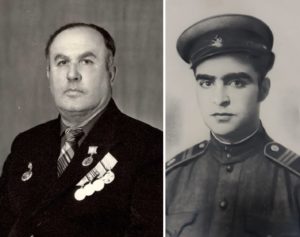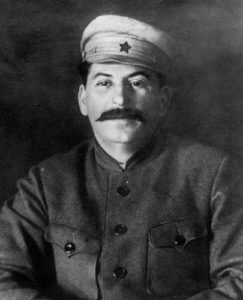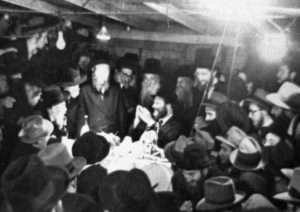– לעילוי נשמת אמנון בן אסתר –
On the night of March 1st, 1953, when Jews around the world had just finished celebrating Purim, attendants of Soviet dictator Josef Stalin found him laying semi-conscious on the floor of his bedroom. He was sick and hemorrhaging blood for the next several days until finally dying on the 5th of March. His death was announced to the public the following day. While most Jews around the world were probably jubilant at the news, little could they know of the incredible events—both political and spiritual—which were transpiring in the fateful days before.
A couple of months earlier, on the 9th of January, state-owned mouthpiece Pravda published a propaganda article about a “Doctor’s Plot” to secretly poison top Soviet leaders, including Stalin. Six of the named doctors were Jewish, and the others were supposedly Jewish-Zionist sympathizers, working together with American spies to destroy the Soviet Union. The article said:
The majority of the participants of the terrorist group… recruited by a branch-office of American intelligence, the international Jewish bourgeois-nationalist organization called “Joint”. The filthy face of this Zionist spy organization, covering up their vicious actions under the mask of charity, is now completely revealed…
Not surprisingly, a huge wave of anti-Semitism spread across the Soviet Union. Stalin used this as a pretext to order the construction of four new concentration camps in Kazakhstan and Siberia, arguing that he will gather Soviet Jews there, “for their own protection”, to save them from angry Russian mobs.* Stalin’s real intent was to finish what Hitler had started. Records suggest that the deportations were set to begin on March 6th, 1953—ironically, the same day his death was announced. After his death, Stalin’s successors quickly absolved the doctors of any wrongdoing and buried the Doctors’ Plot for good. Stalin’s impending holocaust was scrapped. Millions of Jews across the Soviet Union (my family included), were saved—a Purim miracle. But there is much, much more to the story.

My grandfathers, David Palvanov (1915-1985), left, and Anton Amnon Mirzayev (1923-1981, whose 40th yahrzeit is this Sunday, the 9th of Adar), Red Army veterans of World War II, who served with distinction in both the European and Pacific Theatres.
The Rebbe’s Farbrengen
Back in New York City, on March 1st, 1953, the Lubavitcher Rebbe was starting a motzei-Purim farbrengen. In his discourse, the Rebbe recounted how when the czar was deposed in 1917, the Rebbe Rashab (Sholom Dov Ber, the fifth Lubavitcher Rebbe, 1860-1920) urged his followers to go vote. After voting, one simple Hasid saw some Russians shouting hoora! and joined in as well, thinking they meant hu-ra (הוא רע), “he is evil!”—happy that the evil, anti-Semitic czars that had caused the Jews so much anguish were finally gone. Bizarrely, the Rebbe (the seventh one, that is) started to shout hu-ra, too, and repeated the same story three separate times, each concluding with more hu-ra’s. No one in the room understood what was going on. They assumed the Rebbe had done a spiritual rectification of some sort.
Nothing more was said of the Rebbe’s strange actions until March 6th, when Stalin’s death was announced. Turns out, at the same time that the Rebbe was making his hu-ra’s—while recounting the fall of an old anti-Semitic Russian dictator—the contemporary anti-Semitic Russian dictator, Stalin, had collapsed in his room and was writhing in pain. It was only then that the Hasidim that were with the Rebbe on the night of March 1st began to piece together what had happened. Did the Rebbe put an end to Stalin? Well, not directly; the Rebbe was no assassin! (Not even a spiritual one.) So, what was really going on that night of March 1st?
Stalin’s Purim Feast
While Jews around the world were enjoying their Purim feast, Stalin was getting together for a feast of his own back in Russia. As recounted in Stalin’s Last Crime (written by Russian historian Vladimir Naumov and Yale professor Jonathan Brent), in his last dinner Stalin was accompanied by secret police chief Lavrentiy Beria, Georgi Malenkov, Nikita Khrushchev (his soon-to-be successor) and Nikolai Bulganin. Later that night, Stalin had mysteriously collapsed in his room. Yet, no doctor was called in to treat him until the following day. Some believe that Stalin’s friends had gotten him drunk, and then Lavrentiy Beria slipped Stalin a poison. High-ranking Soviet diplomat Vyacheslav Molotov (1890-1986, of “Molotov cocktail” fame) would recall in his memoirs that Beria boasted about how he managed to terminate Stalin: “I did him in! I saved all of you!” Others state that Stalin was not much of a drinker, and was unlikely to let himself get drunk. It is more likely that his treatment was purposely delayed until it was too late. Whatever the case, the evidence is very strong that Stalin’s own inner circle killed him. Why?
For Stalin, the Doctor’s Plot was only the start of something much bigger. As we saw from the Pravda article above, Stalin had tied the doctors to American agents in Moscow. His plans were to accuse the US of plotting to nuke Moscow, and he supposedly had proof from a spy captured and interrogated in 1951. Stalin was gearing up to spark World War III (and possibly drawing up plans for an attack on American soil). His inner circle knew that he had absolutely lost it. And Stalin knew that they did not support him anymore, so he planned another purge of the Communist Party to eliminate dissenters. This was confirmed in the 1956 “Secret Speech” given by Khrushchev, who said:
It is not excluded that had Stalin remained at the helm for another several months, Comrades Molotov and Mikoyan would probably have not delivered any speeches at this congress. Stalin evidently had plans to finish off the old members of the political bureau. He often stated that political bureau members should be replaced by new ones… We can assume that this was also a design for the future annihilation of the old political bureau members and in this way a cover for all shameful acts of Stalin, acts which we are now considering.
This is why Beria had boasted that he had saved his comrades. Khrushchev and the others were in on it. They got rid of Stalin just in time to avoid another Jewish holocaust, to save their own skin, and to prevent World War III. What they did was incredibly risky, and no doubt needed help from Above. The Rebbe must have sensed something going on in the Heavens, and perhaps really did play some spiritual role in the plan’s success.
Indeed, it was a great miracle that the plan succeeded. That it happened on Purim specifically is certainly no coincidence.** After all, Purim is all about how the Jews avoided a holocaust in the nick of time: “…on the very day when the enemies of the Jews sought to dominate them, v’nahafokh hu”—everything was turned upside down and the Jews were saved instead. On the very day Stalin planned to start deporting Jews, his death was announced instead.
And Purim is about the defeat of Amalek which, like Communism, is that atheistic force in the universe seeking to undermine Godliness at every opportunity. The Communists tried so hard to expunge religion that they even attempted to change their calendar to a five-day week so that there could be no commemoration of the Sabbath! Thankfully, the Soviet Union collapsed in 1989, right at the moment when the Messianic Age was set to begin according to ancient prophecy (as explained here). However, Communism is not quite dead, and the forces of Amalek continue to rear their ugly heads around the world today. And so, we continue to read Parashat Zachor each year before Purim, as we will this Shabbat, to remind ourselves that there is yet work to be done until we can celebrate Amalek’s final defeat. May we merit to see it soon.
*According to Stalin’s Last Crime (pg. 294-295), the concentration camps were ordered to house foreign criminals captured in World War II, particularly Germans and Austrians. However, there were no more than 5000 such prisoners in the USSR, so why the need for so many large camps? Besides, the war had ended long ago—why the sudden need for new camps? The real reason was surely tied to the Doctor’s Plot and/or a new impending war.
**In Stalin’s Last Crime, Naumov and Brent point out that one of the hidden heroes in the story was Sophia Karpai. She was one of the Jewish doctors that was accused, then arrested, tortured, and kept in a refrigerated cell. Despite this, Karpai refused to “confess” and maintained the innocence of the Jews. By this point, most of the other doctors had already “confessed” under extreme torture. Karpai held out on her own, which frustrated Stalin and the authorities. They couldn’t have even a single doctor claim innocence, for that would ruin the entire conspiracy. Naumov and Brent write that “It satisfies the imagination to think that the fate of the Jews of Russia might have depended on this latter day, unknown Esther.” (Pg. 307)





